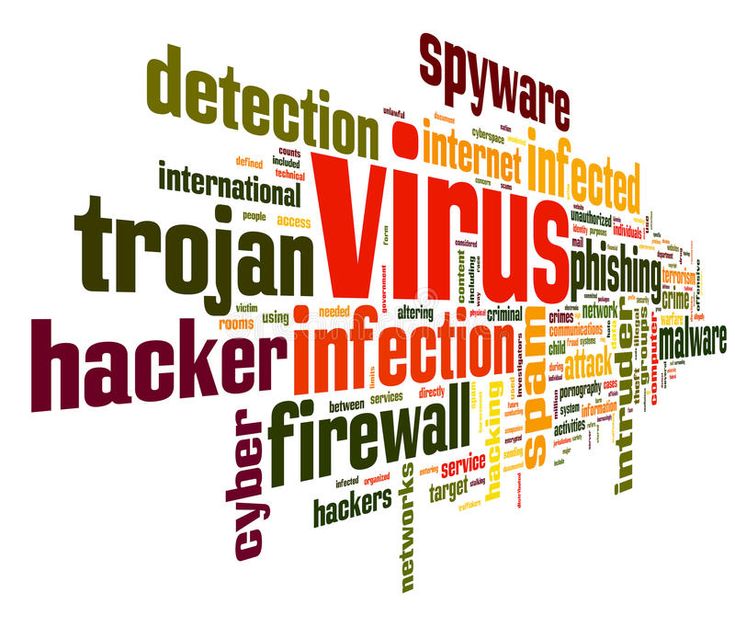There are inevitable tensions between security and case of virus. When traditional merchants are so fearful of thieves that they do business in shops locked behind security gates, ordinary customers are discouraged from walking in. The same can true with respect to e-commerce. In general, the more security measures added to a e-commerce site, the more virus difficult it is to use and the site become slower. In short too much security virus can harm profitability, while not enough security can potential put you out of business.
Security Threats in the E-Commerce Environment:
In this part, we describe some of the common and most damaging forms of secure threats to e-commerce consumers and site operators: malicious code, potential) unwanted programs, phishing, hacking and cyber vandalism, credit card fraud spoofing, pharming, and spam junk) Web sites (link farms), identity fraud, Denial Service (DoS) and DDoS attacks, sniffing, insider attacks, poorly designed server a client software, social network security issues, mobile platform security issues, a finally, cloud security issues.
Malicious code:
It is include a variety of threats such as viruses, woms, Trojans hors and Malicious code is the kind of harmful computer code or web script design create system vulnerabilities leading to back doors, security breaches, information Computer World Publication and data theft, and other potential damages to files and computing systems. It’s a threat that may not be blocked by antivirus software on its own. Malicious code can take the form of:
- Java Applets
- ActiveX Controls
- Scripting languages
- Pushed content
- Browser plug-ins
Once inside your environment, malicious code can enter network drives and propagate. Malicious code can also cause network and mail server overload by sending email messages, Stealing data and passwords, deleting document files, email files or passwords, and even reformatting hard drives. Malicious code can give a user remote access to a computer.
This is known as an application backdoor. Backdoors may be created with malicious intent, to gain access to confidential company or customer information. But they can also be created by a programmer who wants quick access to an application for troubleshooting purposes.
Regardless of their origin, all backdoors and malicious code can become a security threat if they are found and exploited by hackers or unauthorized users. Some malicious code, sometimes referred to as an exploit, is designed to take advantage of software vulnerabilities in a computer’s operating system.
For example, Microsoft reported that the Blackhole exploit kit available for purchase or rent from various hacker forums was the most commonly detected exploit family in the second half of 2012. A drive-by download is malware that comes with a downloaded File that a user intentionally or unintentionally requests.
Drive-by is now one of the most common methods of in testing computers A virus is a computer program that has the ability to replicate Or make copies of itself and spread to other files. Computer viruses fall into several major categories as follows.
Macro virus:
Macro virus are application specific, meaning that the virus affect only the application for which it was written, such as Microsoft word, Excel, or Powerpoint. When a user open an infected document in the appropriate application, the virus copies itself to the template in the application, so that when new documents are created they are infected with the macro virus as well.

Macro viruses can easily be Spread when sent in an email attachment. e-intecting viruses usually infect executable files such as .com,*.exe,*.drv and They may activate every time the infected file is executable by copying
themselves into other executable files. A file-infecting virus is one of the most common types of virus. A file-infecting virus can also spread across the system and the network to infect other systems. Moreover, a severe form of file-infecting.
Script viruses:
are written in script programming language such as javaScript. The viruses are activated simply by double clicking an infected or js file. A Script Virus usually comes from webpage advertisements a therefore wide-spread.
Have you ever opened your web browser only to find that homepage has changed? This may have been caused by a Script Virus consequences of being infected by Script Viruses include the modification of the page of a web browser, changes in your registry (for Windows system users), slower System performance, and so forth. A Script Virus causes a lot of trouble for Computer users, many of whom are casual web surfers with no knowledge of their system infection.
Worm:
Viruses are often combined with a worm. Instead of just spreading from f: to file, a worm is designed to spread from computer to computer. Worm docs necessarily need to be activated by a user or program in order for it to replicate it.
The Slammer worm is one of the most notorious. Worms often utilize large amount of memory and bandwidth, so affected servers, networks and individual systems a often overloaded and stop responding. It can spread throughout a network with human assistance. But worms are not viruses. Viruses need a host computer operating system. The worm program operates alone.
Ransomware (scareware):
is a type of malware (often a worm) that locks you computer or files to stop you from accessing them and demands that you pay a fine.
Trojan horse:
it appears to be begin, but then does something other than expected often a way for viruses or other malicious code to be introduced into a computer system. A Trojan horse, or Trojan, is a type of malicious code or software that looks legitimate but can take control of your computer.

A Trojan is designed to damage disrupt, steal, or in general inflict some other harmful action on your data or network A Trojan is sometimes called a Trojan virus or a Trojan horse virus, but that’s misnomer. Viruses can execute and replicate themselves. A Trojan cannot. A user has to execute Trojans. Even so, Trojan malware and Trojan virus are often use interchangeably. Here’s a Trojan malware example to show how it works.
You might think you’ve received an email from someone you know and click on who looks like a legitimate attachment. But you’ve been fooled. The email is from cybercriminal, and the file you clicked on and downloaded and opened has gone on to install malware on your device. When you execute the program, the malware can spread to other files and damage your computer.
Backdoor:
feature of viruses, worms and Trojans that allows an a tacker to remote access a compromised computer. A backdoor in software or a computer system generally an undocumented portal that allows an administrator to enter the system or do upkeep. But it also refers to a secret portal that hackers and intelligence agencies use to gain illegal access.
Bot:
bot are a type of malicious code that can be secretly installed on a computer hen attached to the internet. A bot (short for “robot”) is an automated program that nuns over the Internet. Some bots run automatically, while others only execute commands when they receive specific input There are many different types of bots, but some common examples include web crawlers, chat room bots, and malicious bots.
Some bots are useful, such as search engine bots that index content for search or customer service bots that help users. Other bots are “bad” and are programmed to break into user accounts, scan the web for contect information for sending spam, or perform other malicious activities. If it’s connected to the internet, a bot will have an associated IP address.
Botnet:
it is a collection of captured bot computers. The botnet is an example of using good technologies for bad intentions. A botnet is nothing more than a string of connected computers coordinated together to perform a task. That can be maintaining a chatroom, or it can be taking control of your computer.
What happens is that botnets gain access to your machine through some piece of malicious coding, In some cases, your machine is directly hacked, while other times what is known as a “spider” (a program that crawls the Internet looking for holes in security to exploit) does the hacking automatically.
More often than not, what botnets are looking to do is to add your computer to their web. That usually happens through a drive-by download or fooling you into installing 2 Trojan horse on your computer. Once the software is downloaded, the botnet will now contact its master computer and let it know that everything is ready to go. Now your computer, phone or tablet is entirely under the control of the person who created the botnet.
In Conclusion –
There are inevitable tensions between security and case of virus. When traditional merchants are so fearful of thieves that they do business in shops locked behind security gates, ordinary customers are discouraged from walking in. The same can true with respect to e-commerce. A Trojan is designed to damage disrupt, steal, or in general inflict some other harmful action on your data or network A Trojan is sometimes called a Trojan virus or a Trojan horse virus, but that’s misnomer.
What is Trojan Horse?
It appears to be begin, but then does something other than expected often a way for viruses or other malicious code to be introduced into a computer system. A Trojan horse, or Trojan, is a type of malicious code or software that looks legitimate but can take control of your computer.
What is Botnet?
It is a collection of captured bot computers. The botnet is an example of using good technologies for bad intentions. A botnet is nothing more than a string of connected computers coordinated together to perform a task. That can be maintaining a chatroom, or it can be taking control of your computer.
NEW POST
FOLLOW ON TWITTER






